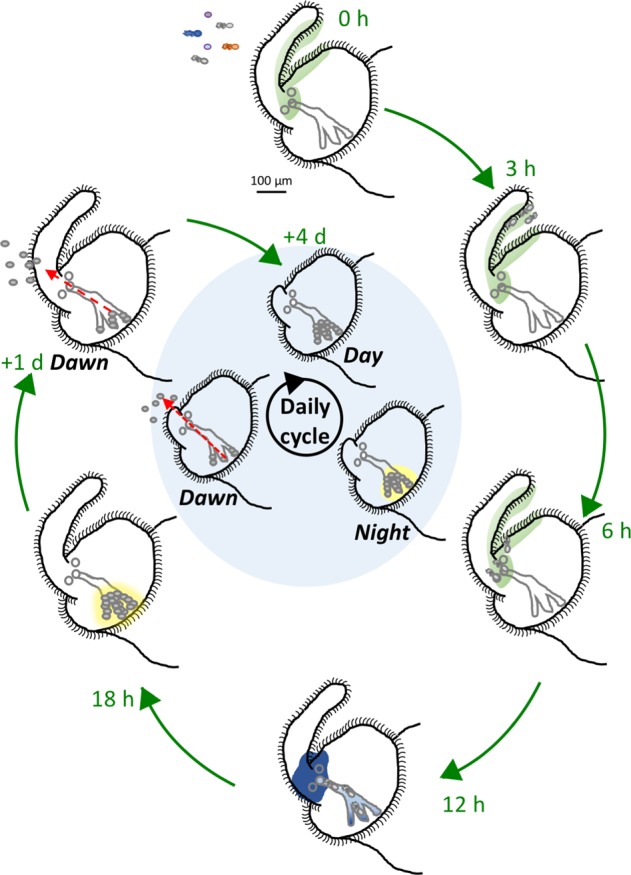Fig. 1.

‘Clock’ illustrating the temporal unfolding of initiation events during the first 4 days of symbiosis. Within 0.5 h of hatching, the host’s ciliated field responds to exposure to ambient bacterial PGN by shedding mucus (light green) in which V. fischeri (gray, flagellated cells) can attach, and then aggregate. Within 4–6 h, the aggregate migrates to the pores, and uses swimming motility and chemotaxis to follow a chemoattractant gradient (dark blue) to enter the surface pores, reaching the deep crypts by between 7 and 10 h. By 12–18 h, the bacteria have multiplied, filling the crypts and inducing bioluminescence (yellow). At dawn, 95% of the bacteria are expelled (red arrow) and the remaining 5% proliferate, starting a new day/night cycle. The presence of the symbionts triggers the development of the light organ, including the full regression of the ciliated field and appendages over the first four days
